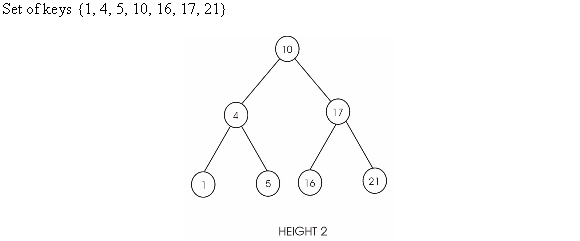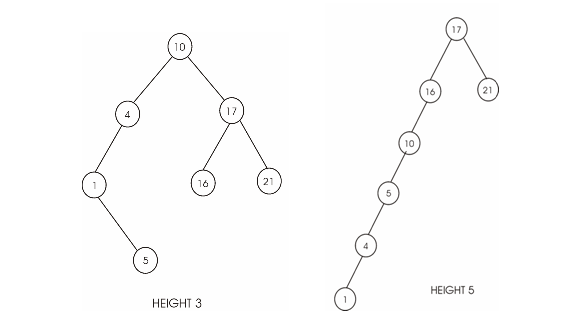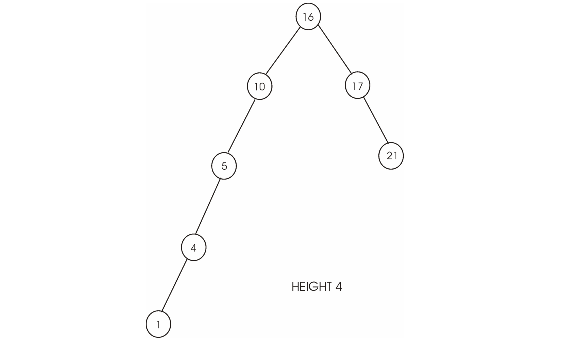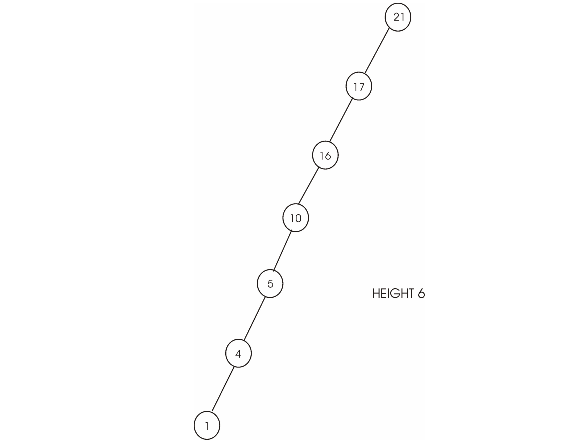The following is the non-recursive algorithm to perform in-order tree traversal on a binary search tree. The following algorithm uses a stack as an auxiliary data structure in order to accomplish the in-order transversal.
INORDER-TREE-TRAVERSE (T)
//initialize an empty Stack
1. A= Empty Stack;
//put the root of tree into current node variable.
2. Crnt_node =T.root
// while loop is used to check the value of current node.
3. While Crnt_node != NIL or Stack-Empty (A)= FALSE
//if the current node value is not null
4. if Crnt_node != NIL then
//insert the value of current node into stack A
5. PUSH (A, Crnt_node);
// store the left child of tree into current node
6. Crnt_node=Crnt_node. left
7. else
// retrieve the element from stack and store it into current node.
Crnt_node =POP (A)
//display the current value
8. Display (Crnt_node)
//store the right child of tree into current node.
9. Crnt_node = Crnt_node. right
Explanation of Algorithm:
• The algorithm starts from the Crnt_node, which contains the root node initially.
• In line 3, while loop is used to traverse the left nodes (left children) from the root.
• In line 4-6, Crnt_node is pushed into stack if the Crnt_node is not NIL.
• In line 7-9, if Crnt_node is NIL , Crnt_node is displayed and starts traversing right children by updating Crnt_node with its right child.
• While loop exits when the Crnt_node is NIL and the stack is empty.
Since the above algorithm traversing all the nodes in the
binary search tree, if n is the number of
nodes in the binary search tree, the above algorithm takes
 time
to traverse.
time
to traverse.
The following is the non-recursive algorithm to perform in-order tree traversal on a binary search tree without using stack as an auxiliary data structure, but using a pointer called previous(Prev). Previous pointer is used to compare with current node.
INORDER-TREE-TRAVERSE (T)
//put the root of tree into current node variable.
1. Crnt_node=T.root
// while loop is used to check the value of current node.
2. While crnt_node != NIL
//if the current node value is not null
3. if crnt_node.left = NIL
//display the current value
4. Display (Crnt_node)
//add the right child of tree into current node variable
5. Crnt_node = Crnt_node. right
6. else
//add the left child of current node into previous node variable.
7. Prvs_node = Crnt_node. left
//while loop is used to check the value of previous node and compare previous
//node with current node
8. While Prvs_node != NIL and Prvs_node.right != Crnt_node
//add right child of previous node into previous node variable
9. Prvs_node =Prvs_node.right
//check the value of right child of previous node.
10. if Prvs_node.right = NIL
//store the current node value into previous node
11. Prvs_node.right =Crnt_node
12. Crnt_node = Crnt_node.left
13. else
//put null into right child of previous node
14. Prvs_node.right = NIL
15. Display (Crnt_node)
//store the right child of tree into current node.
16. Crnt_node = Crnt_node. right
Explanation of Algorithm:
• In line 1, algorithm initializes current node with root.
• in line 2, “While” loop runs until the Crnt_node is NIL.
• In line 3 -7, if left child of current node is NIL, then the Crnt_node is displayed and updates the Crnt_node with the right child of the current node. Otherwise updates the Prvs_node with the left child of current node.
• in line 8, “While” loop is used to find the previous node(or predecessor) to Crnt_node.
• In line 10-12, if the right child of previous node is NIL, then assign current node as right child of previous node and assign left child of the current node to Crnt_node variable.
• In line 13-16, the tree is restored to original .
The above algorithm also takes  time
to traverse the binary search tree with n
nodes.
time
to traverse the binary search tree with n
nodes.









